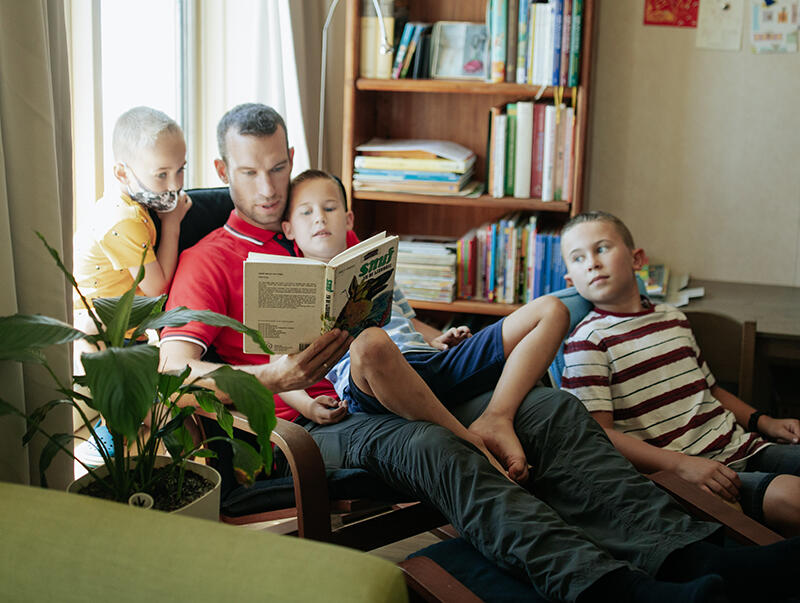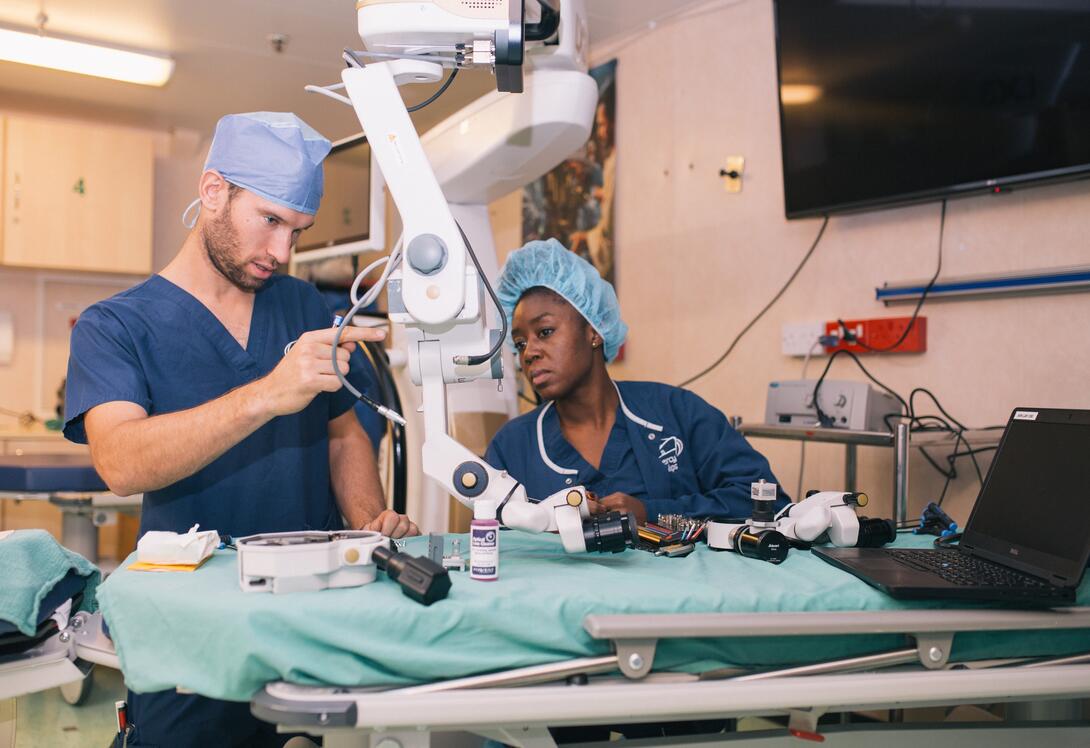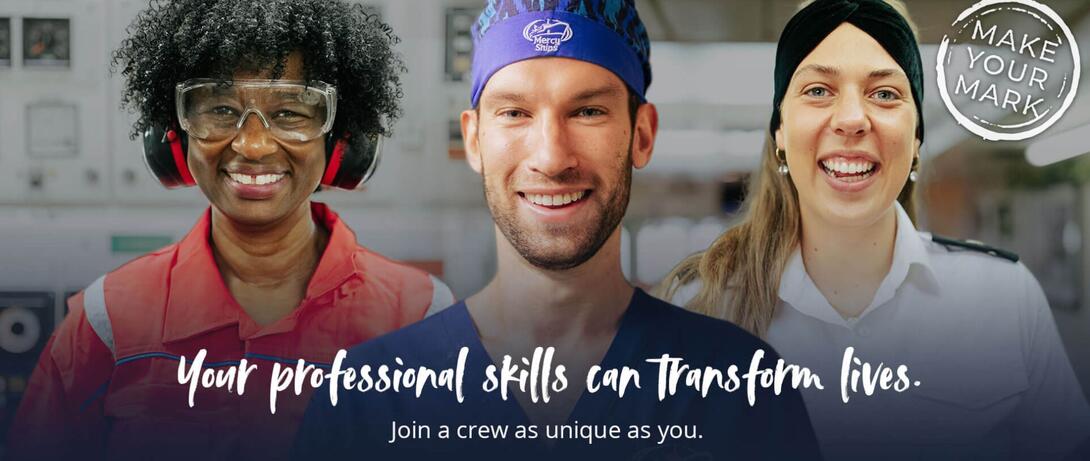Keeping Medical Devices Calibrated While on the High Seas
Founded in 1978, the Mercy Ships organization sends floating hospitals to the far reaches of the globe to provide state-of-the-art, free medical services to people who otherwise lack access to safe, affordable surgical care. More than 50% of the world’s population lives within a 100-mile range of the coast. These modern hospital ships sail with a crew of hundreds and while in port (approximately 10 months), offer medical care so desperately needed by the citizens of the country. With no access to replace tools or medical equipment on location, biomedical technicians on board have to be skilled at maintenance, and creative at problem solving.

A senior biomedical technician with Mercy Ships, Guido Kortleven is currently on board the Africa Mercy. The ship is 152 meters long (500 feet) and has eight decks. While only one deck is used for the hospital, it is a complete hospital with all the necessary equipment needed to offer full medical services. Guido describes, “On the Africa Mercy, there are two biomedical technicians, a senior biomedical technician (me) and a regular biomedical technician. Together we run the whole biomedical department. We have 1200 pieces of equipment in the database. I'm not 100% sure if everything is on board so cleaning up the database is ongoing. We don’t have all the equipment that a hospital on land may have but because the ships are focused on surgical care, the operating rooms are fully equipped. Our ship is equipped with high-level satellite connections to provide a remote expert diagnosis; for example, CT scans are reviewed by radiologists in Canada. We have connections for lab results, which are also reviewed in other countries. The ship’s operations make it easy to deliver high standard surgical care.”
Perhaps the biggest difference between an on-land hospital and the Africa Mercy is keeping the equipment stable. The ship sails into a port and stays for 10 months which means the equipment needs to be strapped down for the trips on the open sea as well as for the fluctuations of the tides and storms that happen in port. As Guido explains, “We are docked 10 months in an African country, and then we back up and sail away. No other hospital in the world will essentially close for two months and then restart after those two months and sail to a new port. What that means is that we secure all our equipment before sailing which is quite tricky because we need to be very careful with the medical equipment. It was one of the biggest surprises for me when I came on board: to secure all the equipment in a way that I would normally never do on land. On the high seas, there can be steep shifts and movement, so the delicate equipment needs to be secured both during the sail and in port. Mercy Ships has 40 years of history, so we have quite a bit of experience with this kind of work. In the hospital, there are systems in place to secure equipment.”
The regular maintenance of the equipment requires creative problem solving. The hospital ship is small compared to a normal hospital, and, because it’s all on one deck, it’s easier to get to the various departments and ORs. However, Guido says, “one of the biggest challenges with a floating hospital is that we are not able to call a service technician and have them arrive in the same day or even the next day. The biomed technicians need to figure out all the issues by ourselves. It is possible to call for remote help, but to get somebody to come to Africa is difficult. Basically, the biomedical technicians need to do almost everything we can to maintain the equipment. Unlike a land-based hospital with a bigger team, it is just not possible to specialize in any one device, so we work on every device in the hospital: anesthesia machines, lab equipment, radiology equipment, etc. Three months ago, I was performing preventative maintenance on the CT scan and I had to align the phantom within the water level. It's impossible because nothing is leveled on the ship or when it is leveled, the very next second it’s not leveled anymore. We need to find ways around, to have another reference point. When we run into issues, we just power through and figure out a way to get it done.”

“Plus, because our supply chain process takes much longer than a normal hospital, we need to think two or three months ahead. The ship receives a container every month from the US, and one container from our European distribution center in the Netherlands. It takes at least one month to ship it and there is always a time delay with clearing immigration, customs, and all the official activities. So, we need to think at least two, probably three months ahead to order all our spare parts and all the supplies.”
As the senior technician on board, Guido has the added responsibility of managing risk assessments for the equipment. If a device needs repair and they can’t fix it because the part isn’t available, they need to be very creative about designing a quick fix. “But we need to balance that with assessing everything and with patience!”
The cycle of 10 months in port is mainly based on the Africa Mercy’s maintenance schedule. Every year, the ship has a set of specific checkups as required by the marine authorities. Plus, the ship needs to go into dry dock every two years. “The ship’s maintenance schedule allows us an opportunity to send the equipment for calibration and to get some external technicians in to help service the medical devices. Most of the time we sail to the Canary Islands which is the closest port to Africa with western facilities. While on the Canary Islands, we get local technicians for some of the equipment that we were not able to service ourselves.”
As you can imagine, there are close ties between the on board hospital and the rest of the ship. The ship is the platform for the hospital but without the hospital, the ship’s mission does not exist. They cannot prioritize one over the other. The on board technical teams for both the ship and the hospital collaborate closely to set the correct priorities.
While there are numerous challenges to being a biomedical technician on board the Africa Mercy, the rewards far outweigh the challenges. Guido has learned a great deal about the medical equipment on board and has become an expert on finding creative solutions to any maintenance issues he encounters.
A new ship, the Global Mercy, is being built and is much larger than the Africa Mercy. It is 174 meters long (570 feet) with 12 decks, two of which are for the hospital. There will be three biomedical technicians on board with a dedicated workshop and a whole range of Fluke Biomedical test equipment. The Mercy Ships organization is actively looking for volunteers to staff the new ship and the biomedical equipment department. Working on the hospital ship is a unique and highly worthwhile experience for the right technician. At Fluke Biomedical we are proud to be able to help these ships on their vital mission, and this supports our goals of making the most highly reliable, accurate and safe equipment.

Mercy Ships deploys hospital ships to transform lives and serve nations, and a crew of volunteer professionals from around the world makes our mission possible. More than 1,200 volunteers from over 60 nations serve with Mercy Ships each year.
From surgeons and medical staff to the captain, cooks, AV technicians, teachers, electricians, biomedical technicians, etc., our crew makes up a plethora of skills and specialties needed to make a difference in the countries we serve!
Together, we’re bringing hope and healing – join us!
Interested to learn more about Mercy Ships or how you can help to leave a lasting legacy in Africa? Go to our VOLUNTEER PAGE.
